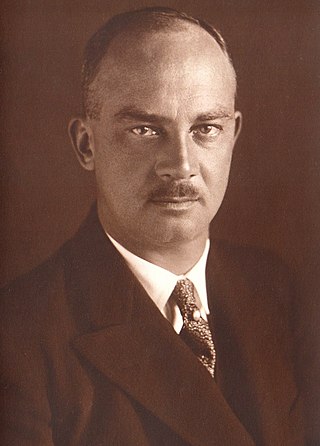
Ernest Augustus Christian George was Duke of Brunswick from 2 November 1913 to 8 November 1918. He was a grandson of George V of Hanover and Christian IX of Denmark and the son-in-law of Kaiser Wilhelm II. The Prussians had deposed King George from the Hanoverian throne in 1866.
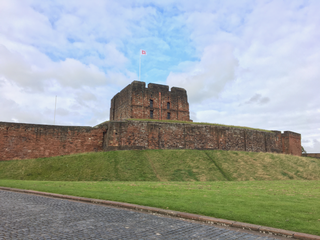
Carlisle Castle is a medieval stone keep castle that stands within the English city of Carlisle near the ruins of Hadrian's Wall. First built during the reign of William II in 1092 and rebuilt in stone under Henry I in 1122, the castle is over 930 years old and has been the scene of many episodes in British history.
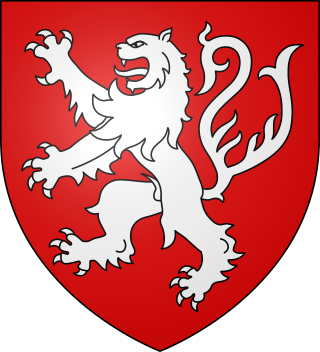
Isabel of Conches, wife of Ralph of Tosny, rode armed like a knight during a conflict in northern France during the late 11th century and was born in Montfort sur Risle, Eure, Normandy, in 1057.
Robert de Brus, 6th Lord of Annandale, jure uxoris Earl of Carrick (1252–1292), Lord of Hartness, Writtle and Hatfield Broad Oak, was a cross-border lord, and participant of the Second Barons' War, Ninth Crusade, Welsh Wars, and First War of Scottish Independence, as well as father to the future king of Scotland Robert the Bruce.

Robert V de Brus, 5th Lord of Annandale, was a feudal lord, justice and constable of Scotland and England, a regent of Scotland, and a competitor for the Scottish throne in 1290/92 in the Great Cause. He is commonly known as "Robert the Competitor". His grandson Robert the Bruce eventually became King of Scots.

Sir William Douglas "le Hardi", Lord of Douglas was a Scottish nobleman and soldier.

William de Forz, 4th Earl of Albemarle played a conspicuous part in the reign of Henry III of England, notably in the Mad Parliament of 1258.

Hugh de Balliol, Lord of Bywell, Barnard Castle and Gainford, was an English nobleman. He was the son of Eustace de Balliol and Petronilla FitzPiers. Balliol was a supporter of King John of England during the Barons Wars of 1215–17.
Robert III de Stuteville was an English baron and justiciar.
Eustace fitz John, Constable of Chester, was a powerful magnate in northern England during the reigns of Henry I, Stephen and Henry II. From a relatively humble background in South East England, Eustace made his career serving Henry I, and was elevated by the king through marriage and office into one of the most important figures in the north of England. Eustace acquired a great deal of property in the region, controlled Bamburgh Castle, and served jointly with Walter Espec as justiciar of the North.

Robert de Vieuxpont, also called Vipont, Veteripont, or de Vetere Ponte, Baron of Westmorland, was an Anglo-Norman noble landowner and administrator.
William de Vesci (c.1125–1184) was an Anglo-Norman feudal lord and Sheriff. Born William fitz Eustace at Knaresborough Castle, Yorkshire, the son of Eustace Fitz John and Beatrix de Vesci, he took his mother's surname.
Edward Aglionby, of Carlisle, Cumberland, was an English politician.
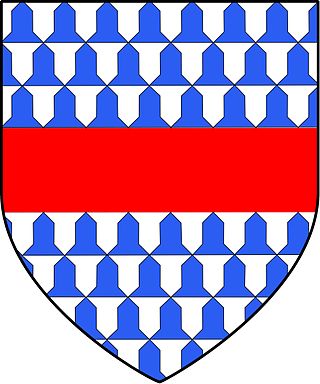
Robert Marmion was an Anglo-Norman nobleman and rebel involved in the First Barons' War. He was referred to as "Robert Marmion the Younger" as his elder half-brother was also called Robert and known as "Robert Marmion the Elder".

The Constable of Chester was a mediaeval hereditary office held by the Barons of Halton. The functions of the Constable are unclear, possibly they related to the custody of Chester Castle, as was the main function of most mediaeval constables, but Sanders (1960) says the office-holder was constable for the entire County Palatine.
Hubert de Vaux, also known as Hubert de Vallibus, was a prominent 12th-century English noble.
Robert de Vaux, also known as Robert de Vallibus,, Baron of Gilsland, was a prominent 12th-century English noble, who served as Sheriff of Cumberland in 1175 and 1176.
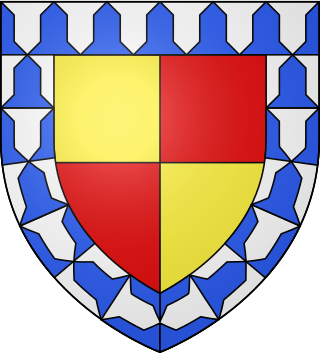
John FitzJohn was an English nobleman who was a leading baron during the Second Barons' War.
Nicholas de Soules, Lord of Liddesdale and Butler of Scotland, was a 13th-century Scottish Border noble.
William de Stuteville Baron of Cottingham in the East Riding of Yorkshire, Lord of Buttercrambe in the North Riding of Yorkshire, was an English noble.










